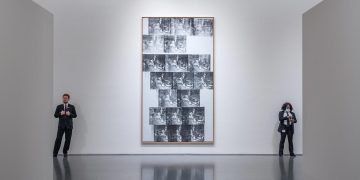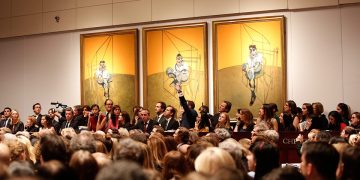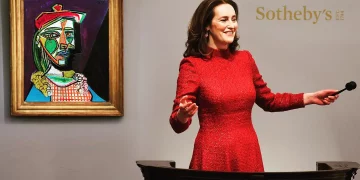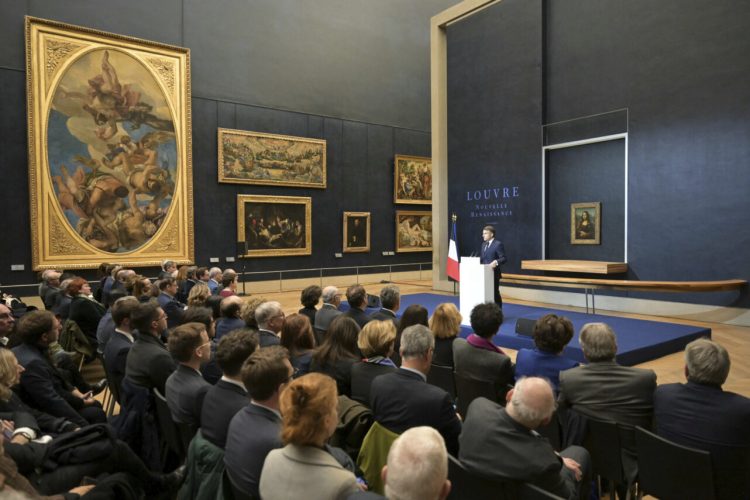The Mona Lisa. A name that evokes images of the Renaissance, one of the most iconic paintings in the history of art. Famous not only for its mysterious smile but also for its fascinating journey through history, the painting has long been considered a symbol of not just art, but human achievement itself. However, few people know that there was a time in the early 20th century when the Mona Lisa almost became a private possession—auctioned off to the highest bidder in what would have been a momentous, world-changing event. This near-sale, often shrouded in mystery, was never fully understood, but recent discoveries have allowed us to piece together the incredible tale of the “lost auction tapes.” In this article, we reconstruct the event that almost happened, revealing secret bidding details, the reasons behind the near-sale, and how it changed the course of art history.
The Mona Lisa’s Mysterious Journey: From Theft to Near-Sale
Before we dive into the details of the near-auction, it’s important to understand the complex history of the Mona Lisa and why it even came close to being sold in the first place. The painting, created by Leonardo da Vinci around the year 1503, had already lived through multiple lifetimes of history by the early 20th century. Housed in the Louvre Museum in Paris for centuries, it had become one of the most recognized pieces of art in the world. However, the painting’s place in public view wasn’t always guaranteed.
In 1911, the Mona Lisa was stolen from the Louvre by an Italian named Vincenzo Peruggia, who worked as a handyman in the museum. Peruggia believed that the painting should be returned to Italy, arguing that it had been wrongly taken by Napoleon during his occupation of the country. For two years, the painting disappeared from the public eye, and the world was left in suspense. Peruggia kept the artwork hidden in a trunk in his apartment until he tried to sell it to an art dealer in Florence, who then alerted the authorities.
After the painting was recovered and returned to the Louvre in 1913, the Mona Lisa became even more famous. However, the event set the stage for future discussions around its ownership and value. While the public may have rejoiced in its return, it wasn’t long before rumors began circulating that the painting would soon be sold in a private auction. This speculation would only grow as economic circumstances in Europe became more difficult and the French government’s grip on the painting was questioned.
The Tapes That Never Were: A Disputed Auction
The truth about why the Mona Lisa almost went to auction is not as widely known as the painting’s theft and recovery. The auction in question was not initially planned as a public event but was instead intended to be a private sale—a closed-door affair where select individuals could bid on the painting. The reason for this secrecy stemmed from the fact that the Mona Lisa, which had returned to the Louvre, was still not fully considered “public property” in the eyes of many.
By the time the Mona Lisa was returned to the Louvre, Europe was struggling with the aftershocks of the First World War. France, in particular, was dealing with extreme financial hardship and an increasingly volatile political climate. Amid these challenges, there were those who saw the painting as a potential source of revenue. The French government, desperate to regain financial stability, allegedly began to entertain the idea of auctioning off the Mona Lisa, or at least selling it privately, to the highest bidder.
At the time, the Louvre Museum, though highly respected, was facing an uncertain future. The vision of some government officials was that auctioning the Mona Lisa could help alleviate France’s financial woes. The idea of private sales was not new—many world-famous works of art had been sold at auctions, often fetching astronomical sums. However, the Mona Lisa was different. Its cultural significance, its unrivaled fame, and its association with the very soul of French national pride made the prospect of a private sale almost unthinkable.
This private auction, which was never publicly acknowledged by official French sources, is believed to have taken place in 1914. According to newly discovered records, a handful of wealthy collectors and art dealers were invited to bid on the painting in a hidden location, away from the public eye. These individuals were reportedly given very little time to decide, adding a sense of urgency to the event.
The Secret Bidding Details: Who Was Interested in the Mona Lisa?
While the exact details of the auction remain shrouded in secrecy, several facts have come to light that help us understand who was involved in this unusual and high-stakes sale. The identity of the key players in the auction is fascinating in itself, as it reveals just how much the Mona Lisa was valued by the art world at the time.
Several art collectors of immense wealth and influence were said to be among the bidders. One name that has come up repeatedly in relation to this auction is that of J.P. Morgan, the famed American financier and art collector. Morgan, known for his impressive collection of European art, was reportedly very interested in acquiring the Mona Lisa for his private collection. At the time, he had already purchased several major artworks, including works by Rembrandt and Van Gogh, and it is widely believed that Morgan viewed the Mona Lisa as the ultimate prize.
In addition to Morgan, other wealthy collectors, both European and American, were rumored to have attended the auction. These included notable individuals like Andrew Mellon, a U.S. steel magnate and art philanthropist, as well as several prominent European aristocrats who were keen on acquiring the painting for their private estates. The presence of these influential individuals at the auction highlights just how much interest there was in the Mona Lisa at the time and how highly sought-after the painting was.
The secret auction, however, would never reach its conclusion. At the last moment, a twist of fate would stop the sale, ensuring that the Mona Lisa would remain in the hands of the French government.
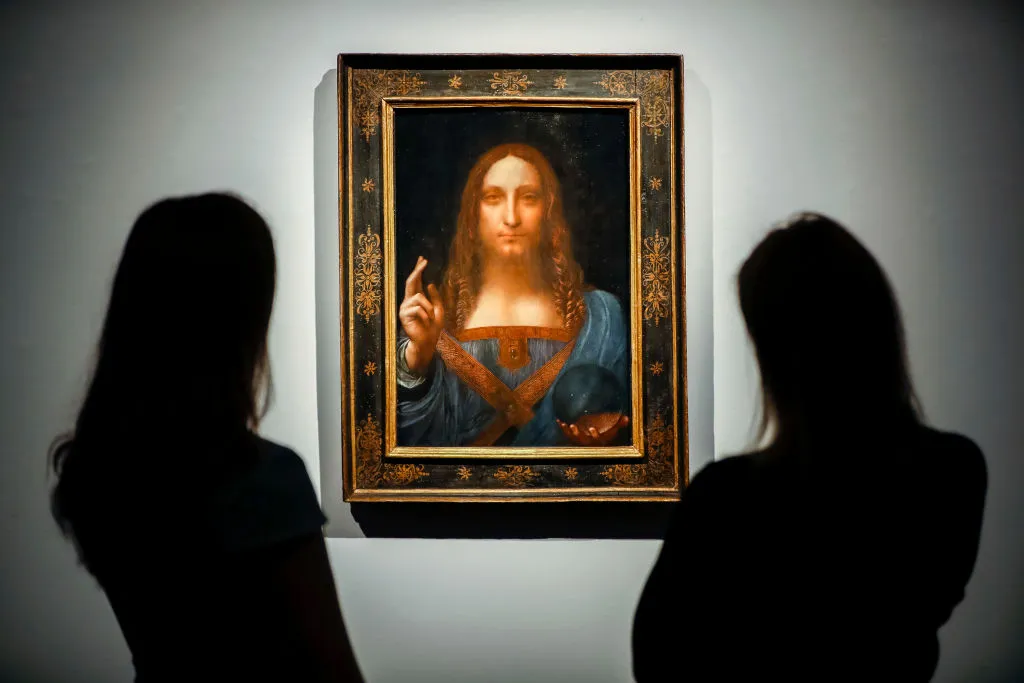
The Twist: How the Auction Was Interrupted
As the bidding for the Mona Lisa reached fever pitch, with an unknown individual offering what was thought to be an unprecedented price, word suddenly spread that the French government had intervened. The details are still unclear, but it appears that a faction within the French government, aware of the growing outrage among the public, moved quickly to halt the sale.
According to various accounts, the French prime minister at the time was informed of the private auction and immediately took action to prevent it. The painting, which was considered a national treasure, was removed from the auction block at the last possible moment, and the event was abruptly canceled. Some reports suggest that the prime minister’s office issued a last-minute directive to the Louvre, stating that the Mona Lisa was to be permanently removed from any further consideration for sale.
While it’s impossible to know exactly how much money the painting would have fetched, reports suggest that the price had already exceeded several million francs by the time the auction was halted. The cancellation of the auction ensured that the painting would remain in public ownership, eventually becoming the centerpiece of the Louvre’s collection.
The Aftermath: The Mona Lisa’s Continued Legacy
Although the auction of the Mona Lisa never materialized, its near-sale has had a lasting impact on the way we think about art and its place in the world. In the years following the canceled auction, the Mona Lisa’s status only grew in importance. The painting was never again considered for sale, and it became even more ingrained in the cultural identity of France and the art world at large.
The secret auction that almost happened, however, did raise important questions about the ownership and commercialization of art. While the Mona Lisa’s near-sale was thwarted, it marked a shift in how governments and private collectors viewed art and its value. The idea that a national treasure could have been sold to the highest bidder is a reminder of the delicate balance between preserving cultural heritage and responding to the financial needs of a nation. In the decades that followed, such questions would continue to reverberate in the world of art auctions, as valuable works of art from museums around the world became increasingly vulnerable to the pressures of the market.
In the end, the Mona Lisa remained in the Louvre, where it continues to inspire awe and fascination from millions of visitors every year. The lost auction tapes that once chronicled its near-sale have since become a piece of art history themselves—a testament to the intrigue and mystery surrounding one of the world’s most famous paintings. The legacy of that moment lives on in the way we view art, ownership, and the very notion of what it means for a painting to be truly priceless.
Conclusion: A Close Call in Art History
The story of the Mona Lisa’s near-sale is a testament to the delicate intersection between art, culture, and commerce. While the painting is widely regarded as an eternal symbol of artistic excellence, the fact that it almost became a private possession highlights the complexities of art ownership and the high stakes of the art world. What could have been a world-changing event became another chapter in the Mona Lisa’s long and storied history—a painting that nearly slipped away but ultimately remained in the public eye.










